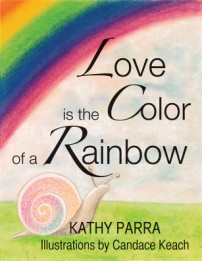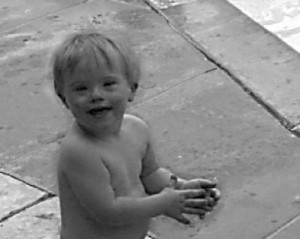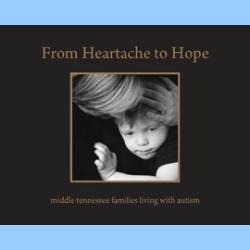By Rita Brhel, API’s publications coordinator, managing editor of Attached Family magazine and an API Leader (Hastings, Nebraska, USA). Originally published in the 2013 “Loving Uniquely” issue of Attached Family magazine (available free of charge to API members–and membership in API is free).
 We often hear the importance of treating children fairly, but at Attachment Parenting International (API), we advocate rather to love each of our children uniquely. Because every child—just like every adult—is one of a kind, each individual parent-child relationship forms to the distinctive shape of each other’s differences in temperament, interests, opinions, aversions, conversions and other subtle nuances of what makes each person and their interactions unique.
We often hear the importance of treating children fairly, but at Attachment Parenting International (API), we advocate rather to love each of our children uniquely. Because every child—just like every adult—is one of a kind, each individual parent-child relationship forms to the distinctive shape of each other’s differences in temperament, interests, opinions, aversions, conversions and other subtle nuances of what makes each person and their interactions unique.
API celebrates every person’s unique traits, but some children’s differences set them apart from societal expectations enough that daily interactions—whether at home, childcare or school—can be challenging. Rather than viewing our children through the lens of understanding, however, our society’s response is often to see these differences as “symptoms” of a disorder and to follow up with treatments that may not resolve the problem.
I am excited to share a discussion with Barbara Probst, PhD, LCSW, author of When the Labels Don’t Fit, on her approach to facilitate understanding among parents and teachers in order to discover a new relationship with sometimes-challenging children based on appreciation and respect instead of illness.
RITA: What inspired your alternative approach to “treating” children whose differences often lead them to being diagnosed with disorder?
DR. PROBST: I feel quite strongly about the way our culture seems to be viewing every difference, difficulty, struggle and quirk—every extreme or unusual behavior—as a disorder, especially when it comes to kids!
The idea for When the Labels Don’t Fit really grew out of my experience as a clinical social worker. So many parents were coming to me with kids who were intense, complex, confusing, rigid, provocative, volatile, inconsistent—challenging children who had either been given multiple diagnoses and treatments, none of which really helped, or whom no diagnosis seemed to fit.
These parents were understandably looking for some kind of explanation, some way to make sense of their child’s behavior. Yet the only thing they were offered was a negative framework, a way to categorize their child by what was supposedly wrong or missing.
There was no framework that also took into account a child’s strengths, talents, affinities, needs, style, temperament—the things a child loves and gravitates toward—as tools for understanding how that child responds to the world and who he or she really is. There seemed to be an assumption that “naming the disorder” was the key to assessing what was going on and making it better—as in the medical way, “fixing the problem” by diagnosis and cure—but it was obvious that this narrow approach wasn’t really helping anyone, neither kids nor their parents.
I got curious and started to investigate the whole “diagnosis explosion”—more and more kids receiving psychiatric labels, at younger and younger ages, for fewer and milder symptoms. The statistics are pretty staggering! For instance, one in every five American children meets current criteria for a psychological disorder, with three times as many kids now being diagnosed with emotional or behavioral disorders than were diagnosed 15 years ago. It makes you wonder if there’s really something wrong with 20% of our kids or something wrong with our definition of “normal.”
As a culture, we’ve pathologized a whole range of traits and ways of interacting with the world that used to be part of the variety of human experience. Some of the difficulties come from a poor fit with the environment, some from the struggles that are just part of living and growing up, and some are from unrealistic expectations and intolerance for kids who push the envelope or make us uncomfortable.
It’s not that a child’s struggles aren’t real or that some kids aren’t truly hard to raise. Certainly, there are kids who do things that seem odd or excessive at various points in their development, and of course it’s painful for parents when they can’t seem to reach or handle a child they love. And it’s not that “anything goes” or that kids don’t need to understand limits and develop empathy. But finding a disease-based category for the child’s problems isn’t the answer either! Just because a child has difficulty managing stimulation or frustration, hates change or needs to ground herself through touch, it doesn’t necessarily mean that those difficulties are indicators of an underlying pathology.
RITA: This is what many parents refer to as “spiritedness” or “high needs.”
DR. PROBST: I knew there had to be a better, more direct way to understand and help these challenging kids and their parents. I began focusing on the specific issue or trait, rather than the label that “explained” the trait as a symptom of one or another disease, zooming in to the feature, like perfectionism or impatience, that lay behind the problematic behavior. I wanted to understand who a child is, not what disorder he or she has—to be truly solution-focused and figure out why the roof was leaking instead of how to reward the child for mopping the wet floor.
RITA: That’s a great analogy. How did this approach work in the field?
DR. PROBST: I began to apply this new approach in my work, looking for a “difficult” child’s core features as the key to what made that child tick. Again and again, this new approach brought practical and positive results where nothing had helped before—in an amazingly short time!
I began to give presentations and workshops to parents, educators and mental health professionals, showing them how to use the temperamental map I’d developed to figure out how unusual or extreme traits interact with elements of the environment, and then how to target strategies—concretely and proactively—to a child’s specific features. It was so empowering! It gave parents real hope.
They began to see their challenging child as someone intriguing instead of someone to control or fear. What a great experience!
RITA: What temperamental differences do you find create the most friction? How would you define a “challenging child”?
DR. PROBST: Let me start by saying a word about temperament. Temperament is your essential nature, your innate way of being in the world. The early view of temperament, however, like the model Chess and Thomas developed in the mid-1970s, tended to present temperament as a series of good/bad polarities: attentive or distractible, adaptable or inflexible, and so on. I find that quite biased and value-laden, to be honest, like another set of pejorative labels.
It’s really about the fit between traits and context, not about some traits being intrinsically better than others. After all, a highly tenacious child who won’t cede her turn at the kindergarten easel until she’s satisfied with her painting is seen as resistant and antisocial, but she’s seen as admirably persistent in the science lab.
More broadly, if we lived in a culture that valued curiosity and responsiveness instead of order and self-restraint, we’d think that a child who could sit still for an hour, ignoring all the interesting people and impressions around him, as having “attention surplus disorder”!
So it varies, and traits that seem to be problematic in one situation or at one age can be an asset in another, the seeds of a child’s authenticity and fulfillment.
In addition, temperamental traits exist on a continuum, like a high need for stimulation or a low tolerance for change. Although traits in the middle may make you more mellow and adaptable to a wider range of contexts, no trait is inherently “better” or “worse” than another.
Think of it descriptively, rather than judgmentally: Some kids go off on tangents, some can’t bear to leave something unfinished, some find comfort in order and repetition or, on the contrary, always want change. Some like to plunge right in while others take time to warm up and then need to disengage slowly. Within each dimension, there’s a range, with a child tending toward the high or low end when he’s stressed.
Friction is more likely to arise, then, when a trait or its manifestation is at one of the extreme ends of the continuum, especially when the environment has a narrow zone of tolerance. A fixed time schedule—“It’s 10:00, put away your journals and get ready for recess”—can cause a shrieking tantrum in a child who has to “complete his mission” or needs to stop incrementally. A classroom full of stimulating choices can make a perfectionistic child, overwhelmed by all the roads not taken no matter what she chooses, highly anxious or irritable.
RITA: What about temperamental difference between a child and an adult?
DR. PROBST: By “environment,” I also mean the people in the child’s world. If you’re a parent who thinks spontaneity is fun, for example, and you have a child for whom that’s distressing and who really needs to know ahead of time exactly what to expect in order to feel safe, or vice versa, you’re more likely to encounter misunderstanding and conflict. For example, does your child prefer to know what she’s getting for her birthday, or does she want to be surprised?
So it’s often the mismatch, rather than the trait itself, especially when a child hasn’t matured enough to develop a repertoire of coping strategies or is blamed by adults who expect him to be the one to do all the adapting, rather than being curious and open to small changes in the environment that might create “wiggle room” or a “margin of tolerance.”
It’s also important to remember that different traits can lie behind the same challenging behavior, so you need to step back and figure out why your angry child won’t go to bed. Is it because of an irregular inner rhythm or pajamas that “don’t feel right”? Does he need to disengage a bit at a time because of high intensity and focus? Does she need to finish her game because she’s a perfectionist who can’t bear to leave something incomplete? Does he need a set of tactile markers to anchor the verbal instructions?
Threats, logic, cajoling, even offers of kindness and generosity—“how about an extra story?”—may have nothing to do with the reason your child refuses to go to bed. It’s like throwing solution darts at a situation in the hope that one will somehow stick! It’s not a matter of changing the exterior result—getting the child to “behave” and go to bed—but of understanding the interior cause and the child’s interaction with elements of the environment, including space, timing, tempo and sensory factors.
So a “challenging child” is one whose unusual, extreme or erratic traits have been misunderstood and mishandled, often due to a poor contextual fit. Your child’s need for movement or silence or control still must be met proactively, but a need that’s been respected and met, even partially, tends to lead to far less “challenging behavior” than a need that’s been ignored, denied or shamed.
RITA: What steps would you suggest for a parent seeking to learn a different way to look at and act toward their child?
DR. PROBST: One of the most powerful things parents can do is to change their language. Describe your child, to yourself and to her, as organized rather than obsessive, curious about life rather than distractible. Instead of calling her picky, tell her: “You sure do know what you like!” Instead of stubborn: “You’re not a quitter!” That helps her feel she’s not fundamentally defective and helps you feel more open and positive, which results in a less tense relationship that benefits everyone.
You can also use language to put borders around troublesome behavior. “You’re the kind of person who has a tough time with disappointment (or waiting, feeling rushed or feeling there are too many rules for how to do something).” That gives a precise, bounded and concrete place to begin, rather than making a child feel globally wrong or defective.
When a trait like low adaptability, for instance, is likely to pose a problem, talk about it in advance. Name it, predict and use respectful curiosity to help your child make a plan: “It really bothers you when kids change the rules for Capture the Flag. Variations aren’t fun to you; it just feels like they’re ruining the game. So what’s your plan if that happens today? Any ideas about what you can do?”
If your child has had a successful experience of managing a similar situation in the past, remind him of his past success and let him be the expert: “Remember how well you handled things that time the pizza place turned out to be closed? What was the secret of your success?”
If he’s not yet been able to handle it well, offer a suggestion in the spirit of experimentation. Collaborate with your child as detectives or scientists on a quest for data: “Well, I know something that tends to help people who like things to stay the same. Are you game to try and let me know if it helps?”
Tell your child: “I see that you really like to make your own decisions.” Include that feature in advance, rather than punishing your child afterward for asserting her desire to be in control. Give her a way to be involved in the decision about how to clean up, for example, before it’s time to clean up.
This kind of practical, respectful approach is so much more effective than trying to maintain complicated systems of points and penalties! Remember that your child is doing the best he can under the circumstances, given his limited resources. It’s not about reward and punishment, but about the power of self-knowledge. Your goal, in the end, is to help your child be happy and successful because of who he is.
RITA: Some parents still struggle to set limits with their children. It’s as if they and their child aren’t talking the same language.
DR. PROBST: A few core principles lie behind the more than 60 practical strategies in When the Labels Don’t Fit. One principle is to proactively and concretely match the strategy to the feature. For instance, a child who has difficulty feeling time needs a way to organize externally what she can’t organize internally. Tell her: “Two more times going down the slide,” (a unit of action), rather than, “Five more minutes till we have to leave the playground.”
A child who can’t bear disappointment needs a backup plan that’s already in place right from the beginning. For example: “My Plan B is chocolate chip cookie dough ice cream if they don’t have rocky road.” Your child can figure out his backup plan before getting in the car to go out for ice cream, then write it on an index card and put it in his pocket. Unexpected let-downs are harder, but the Plan B approach will be more likely to be accepted if your child has already practiced it in other situations.
A child with a ten-minute attention span needs a planned break after eight minutes.
A child who needs to control and becomes angry at not being in control needs a safe avenue to express power with temporal and spatial boundaries. What can she control? Can you give her a Magic Coin that she can “spend” each day on something where she can be the “boss”? That helps her learn to make and live with choices. Remember: If the only power you give a strong-willed child is the power to refuse, she will surely use it.
And so on. Once you get the idea that it all stems from “the kind of kid this is,” it becomes so much easier to be effective.
Another important principle is to show your child that you “get it.” Don’t try to make your child feel better by telling him that “it’s not a big deal”—to him it is—or that he doesn’t really feel what he feels. A child who’s hurt or angry at being rejected needs you to respect his reality and his temperament. If you deny or dismiss his experience, he’ll think you’re lying or don’t care or both. It’s better to say, “I get that it really hurts.”
Then think about his temperament. Is he the kind of person who feels better when he plunges into a new activity or when he has a quiet space to be alone? Does he tend to ruminate and thus need diversion to interrupt the cycle, or does he lock his feelings away and need help bringing them to the surface?
Too often, unfortunately, we end up rewarding a child for not being himself. A child who needs to touch or move, for instance, gets praised for not touching or not moving, rather than being given a safe way to meet his temperamental need for touch or movement. Then we’re surprised when that child becomes depressed or anxious or hostile.
Begin at the level where success is possible and build from there. Lowering the necessary dose gradually can be an empowering way to help a child manage her need for movement, praise, control and so on.
RITA: How do parents know when they may need more help, when a child should be evaluated for ADHD, bipolar disorder, obsessive-compulsive disorder, et cetera?
DR. PROBST: Certainly there are children whose difficulties go beyond an unusual temperament or poor temperament-environment fit. It would be just as wrong to dismiss a serious condition as it would be to over-diagnose a minor one. When we call every moody adolescent “bipolar” or every fidgety preschooler “ADHD,” we trivialize the very real suffering of those who truly do merit the label.
Deciding if a child may have an enduring problem beyond a quirky temperament is a complex process. It’s important to remember, however, that there’s no objective test for any of these diagnoses like there are for medical conditions like asthma or diabetes; the determination is always a subjective one. The criteria rely heavily on words like “frequently” and “often” and on checklists completed by adults rather than on a child’s self-report.
But if difficulties persist despite strategies to reduce stress and maximize adaptation, are present under a wide range of circumstances and cause significant impairment, then it may be wise to seek an outside evaluation.
It’s also important to remember that a child may still need help, even if she doesn’t necessarily meet the criteria for an official mental health diagnosis. The way our insurance reimbursement system is set up requires some diagnosis in order to justify the need for treatment under the principle of “medical necessity.” So the mental health clinician may select the label that seems the closest match, the least stigmatizing or the most likely to get the child the services he needs.
Yet in working with the child, what’s often more significant than the formal label are the specific impairing traits, which may or may not correspond to items on the official symptom list. For instance, “doesn’t feel time” and “is a perfectionist” aren’t on the list for any of the educational or mental health categories, even though they’re common problems.
RITA: Thank you so much, Dr. Probst, for your time and insights! Can you share any final thoughts on this topic?
DR. PROBST: It’s vitally important for us to keep questioning the idea that “difficult” or “different” means disordered! We need to reject the idea that every child who’s hard to handle or doesn’t fit in has a psychiatric disorder.
Many children go through tough times or seem extreme, eccentric, provocative or immature at various points in their development. But that doesn’t mean they have a disease that needs to be cured, medicated or taken as the most important aspect of who they are.
We need to ask the right questions. Instead of trying to figure out if a child has ADHD, Asperger syndrome or bipolar disorder, we need to take the labels apart, zoom in to understand each feature and find specific places where change is possible.
We need to identify the source of a problem—usually in unmet needs, discord and imbalance, not from something inherently wrong or missing in the child’s makeup—before trying to solve it by generic approaches. We need to tailor every strategy to fit a child’s specific traits and needs, and to take responsibility for how we, too, need to adapt. We can’t ask our kids to do all the work.
You can read more in the “Loving Uniquely” issue of Attached Family magazine, in which we delve into temperament and how it intersects with parenting and the development of attachment style, and we challenge the notion that every hard-to-handle child needs a diagnosis. The magazine is free to API members–and membership in API is free! Click the link above to access your free issue or join API.



 My son woke up that summer morning and came to me. His light blue-green eyes were clear, and he looked healthier than I had seen him in a long time. Something was different with my three-year old.
My son woke up that summer morning and came to me. His light blue-green eyes were clear, and he looked healthier than I had seen him in a long time. Something was different with my three-year old.
 The personal stories of families and individuals affected by autism in the beautifully photographed book, From Heartache to Hope: Middle Tennessee Families Living with Autism by Leisa A. Hammett, were an amazing read.
The personal stories of families and individuals affected by autism in the beautifully photographed book, From Heartache to Hope: Middle Tennessee Families Living with Autism by Leisa A. Hammett, were an amazing read.
 It is now clear that a child can learn in every social interaction, anywhere. The more a child interacts, the more the child will learn, communicatively and cognitively. The key factor is for the child to have many one-on-one partners who act and communicate in ways the child is capable of and interested in.
It is now clear that a child can learn in every social interaction, anywhere. The more a child interacts, the more the child will learn, communicatively and cognitively. The key factor is for the child to have many one-on-one partners who act and communicate in ways the child is capable of and interested in.